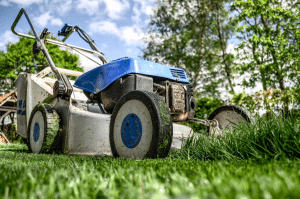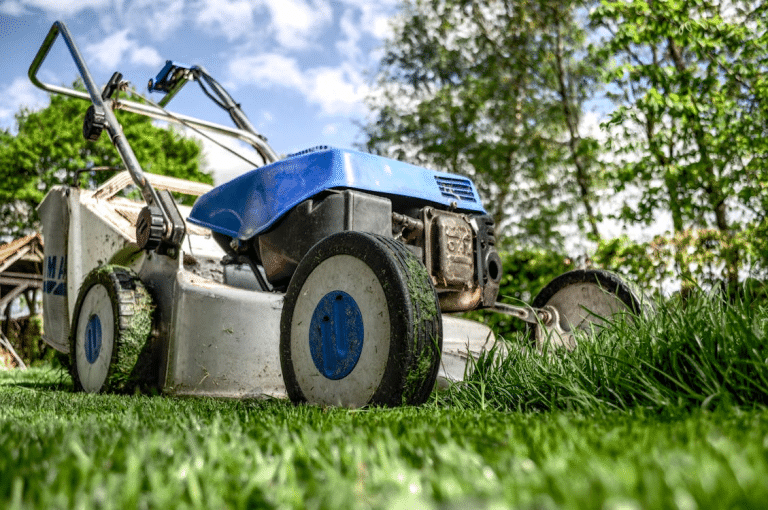Every homeowner dreams of a lush, emerald-green lawn, the kind that feels soft underfoot and makes the whole property shine. But many of us know the reality: achieving that dream can feel like a constant, uphill battle against weeds, bare patches, and unpredictable weather.
The secret isn’t working harder; it’s working smarter. A meticulously planned lawn care schedule is the single most effective tool you have. It ensures your grass gets exactly what it needs, precisely when it needs it, transforming your weekend chores into a strategic, satisfying routine. This guide outlines a simple, season-by-season schedule designed to maximize results with minimal stress.
Why Timing is Everything
A random approach to lawn care yields random results. A schedule, on the other hand, puts you in control.
- Strategic Feeding: Applying fertilizer at the right time in a plant’s growth cycle ensures maximum nutrient absorption for deep roots and vibrant color.
- Proactive Weed Control: Applying pre-emergent herbicides in early spring stops weeds like crabgrass before they even have a chance to sprout.
- Efficient Watering: Adjusting your watering schedule to the season prevents waste and protects your lawn from drought stress or fungal diseases.
Your Year-Round Lawn Care Blueprint
Think of this as a general guide. Depending on your specific climate and grass type (e.g., St. Augustine, Bermuda, Zoysia), you may need to shift these timings by a few weeks.
Early Spring (The Wake-Up)
As the soil warms, your lawn is waking up and hungry. It’s time to set the stage for the coming season.
- Clean Up: Rake away any lingering leaves, branches, or debris from winter. This allows sunlight and air to reach the soil.
- The First Mow: Once the grass begins to grow, give it the first cut of the season. Bag the clippings to help prevent the spread of any winter fungal diseases.
- Weed Prevention: This is the crucial window to apply a pre-emergent herbicide to prevent crabgrass and other annual weeds.
Late Spring (The Growth Spurt)
With longer days and warmer temperatures, your lawn is in active growth mode.
- Mow Regularly: Begin a consistent mowing schedule, typically once a week. Never remove more than one-third of the grass blade at a time.
- Fertilize: Feed your lawn with a quality, slow-release nitrogen fertilizer to fuel its growth and deep-green color.
- Spot-Treat Weeds: Pull or spot-spray any broadleaf weeds that managed to sneak through.
Summer (Survival Mode)
Summer heat is the biggest stressor for your lawn. The goal now is to help it survive and thrive.
- Mow High: Raise your mower deck to a higher setting. Taller grass blades provide shade for the soil, keeping it cooler and reducing water evaporation.
- Water Deeply, Not Daily: Water early in the morning, 1-2 times per week. Deep, infrequent watering encourages strong, drought-resistant roots.
- Monitor for Grubs & Disease: Keep an eye out for irregular brown patches, which could be a sign of pests or fungus.
Fall (The Power-Up)
Fall is arguably the most important season for lawn care. You’re not just cleaning up; you’re preparing your lawn for a healthy comeback next spring.
- Keep Mowing: Continue to mow as needed until the grass stops growing.
- Aerate & Overseed: If your soil is compacted, fall is the perfect time to aerate. Follow up with overseeding to fill in thin areas and build a denser turf.
- Fertilize for Winter: Apply a “winterizer” fertilizer. This fall feeding is critical, as it develops strong roots and stores nutrients for a quick green-up next spring.
- Manage Leaves: Don’t let a thick layer of leaves smother your grass. Mulch them with your mower or rake them up.
Winter (The Long Nap)
While your lawn is dormant, your main goal is to protect it from stress and damage. Think of this as a quiet but essential phase of preparation for the explosive growth of spring.
- Keep it Clean: Continue to remove any leaves, branches, or other debris that fall onto the lawn. A thick layer of wet leaves can smother the grass, block sunlight, and promote fungal diseases like snow mold.
- Minimize Foot Traffic: Dormant grass is fragile. Try to avoid walking on the frozen or saturated lawn as much as possible. Heavy traffic can damage the grass’s crown (the central growing point), leading to bare spots in the spring.
- Manage Salt Carefully: If you use de-icing salt on your driveway or walkways, be mindful of where the salty slush ends up. The salt can severely damage or kill the grass along the edges of these surfaces. Use a salt-free de-icer when possible.
- Plan Your Tool Maintenance: Winter is the perfect time to get your equipment ready for spring. A little prep now means you’re ready to go on that first warm day.
- Sharpen Mower Blades: A sharp blade makes a clean cut, which is healthier for the grass. Dull blades tear the grass, leaving it vulnerable to disease.
- Clean Your Equipment: Remove caked-on grass and dirt from your mower deck and other tools.
- Proper Battery Storage: For your cordless tools, proper winter storage is key. Bring your Li-ion batteries indoors and store them in a cool, dry place away from extreme temperatures. Storing them with a partial charge (around 50%) is ideal for long-term battery health.
The “Effortless” Part: Your Tools Make the Difference
Following a schedule is one thing, but having the power and convenience to execute it without hassle is another. This is where modern lawn care equipment has changed the game.
The endless tugging on a pull-cord, the messy gas and oil mixtures, and the restrictive tangle of extension cords are things of the past.
The cordless revolution, powered by advanced lithium-ion batteries, for example, the ones for the Greenworks 40V G-MAX Power Tools, has made sticking to your schedule genuinely effortless.
- Instant Power, No Prep: When your schedule says it’s time to mow or trim, you can just grab your tool, pop in a battery, and go. The readiness of your equipment removes the biggest barrier to getting a quick job done.
- System-Wide Efficiency: The real genius lies in an integrated battery system. The same powerful battery that runs your lawn mower can be swapped into your string trimmer to create crisp edges, then into your leaf blower to clear the driveway. This seamless workflow turns a series of disconnected chores into one smooth, efficient process.
- Power Without the Noise: Modern lithium-ion batteries deliver incredible, gas-like power without the deafening roar and fumes. You can get your lawn work done early in the morning without waking the entire neighborhood.
- Virtually No Maintenance: Less time spent on engine maintenance means more time enjoying your yard. At the end of the season, winter prep is as simple as cleaning the tool and storing the battery indoors.
Conclusion
A beautiful lawn doesn’t have to be a demanding, time-consuming burden. By combining a smart, season-based schedule with the right modern tools, you can achieve remarkable results. A reliable plan provides the roadmap, and a powerful lithium-ion battery system provides the effortless engine to get you there.













